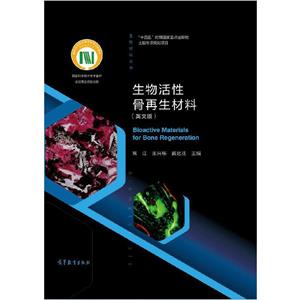List of Contributors
Preface
1.Material characteristics, surface/interface, and biological effects on the osteogenesis of bioactive materials
1.1 Fabrication methods of bioactive materials for bone regeneration
1.1.1 Material characteristics of bioactive materials for bone regeneration
1.1.2 Design of porous bioactive materials
1.1.3 Main challenges and prospects
References
1.2 Surface micro-/nanostructure regulation of bioactive materials for osteogenesis
1.2.1 Surface morphology of bioactive materials for osteogenesis
1.2.2 Porosity of bioactive porous materials for osteogenesis
1.2.3 Grain size of bioactive materials for osteogenesis
1.2.4 Summary
References
1.3 Protein adsorption on bioactive materials and its effect on osteogenesis
1.3.1 Current methods for studying protein adsorption
1.3.2 Material factors influencing protein adsorption
1.3.3 The effect of protein adsorption on the osteogenesis of bioactive materials
1.3.4 Summary
References
1.4 Osteogenesis induced by bioactive porous materials and the related molecular mechanism
1.4.1 Angiogenesis of bioactive materials and the involved molecular mechanism
1.4.2 Osteogenesis of bioactive materials and material_mediated mesenchymal stem cell function
1.4.3 Role of immunoresponse in the osteogenesis of bioactive materials
1.4.4 Summary
References
2.Biomaterial-induced microenvironment and host reaction in bone regeneration
2.1 Bioactive inorganic ions for the manipulation of osteoimmunomodulation to improve bone regeneration
2.1.1 Introduction
2.1.2 Application of bioactive ions in developing bone biomaterials and their possible application in manipulating
osteoimmunomodulation
2.1.3 Combining bioactive elements to develop novel bone biomaterials with osteoimmunomodulatory properties as well as promote
osteogenesis
2.1.4 Summaries and future prospects
References
2.2 Silicate-based bone cements for hard tissue regeneration
2.2.1 Preparation of silicate-based bone cement
2.2.2 Self-setting properties and drug delivery performance of silicate-based bone cement
2.2.3 In vitro and in vivo bioactivity and osteoinductivity of silicate-based bone cement
References
2.3 Trace element–based biomaterials for osteochondralregeneration
2.3.1 Introduction
2.3.2 Biomaterials for osteochondral regeneration
2.3.3 Trace element–based biomaterials for osteochondral regeneration
2.3.4 Conclusions and perspectives
References
2.4 Bioactive ions for bone tissue engineering design
2.4.1 Introduction
2.4.2 Effects of bioactive ions on cell proliferation and stemness maintenance
2.4.3 Effects of bioactive ions on osteogenesis and osteoclastogenesis
2.4.4 Effects of bioactive ions on angiogenesis
2.4.5 Design of bioactive ion composite biomaterials for bone tissue engineering
2.4.6 Conclusions and perspectives
References
3.A bone regeneration concept based on immune microenvironment regulation
3.1 Characteristics of the immune microenvironment in biomaterial-based regeneration
3.1.1 Immune response after biomaterial implantation
3.1.2 Macrophage in bone-relevant physiological and pathological processes
3.1.3 T cells and B cells in bone-relevant physiological and pathological processes
3.1.4 Dendritic and natural killer cells in bone-relevant physiological and pathological processes
References
3.2 Biomaterials and their degradation products in the immune microenvironment and regeneration
3.2.1 Metallic implants, the immune microenvironment, and regeneration
3.2.2 Inorganic materials implants, immune microenvironment, and regeneration
3.2.3 Organic materials implants, immune microenvironment, and regeneration
References
3.3 Biomaterial research and development aim to pr

















